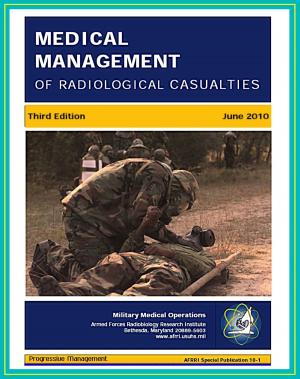ISIS: The Terrorist Group That Would Be a State - ISIL, Islamic State, Jihadist Strategy and Savagery, Strengths and Weaknesses, al-Zarqawi, al-Qaeda, al-Baghdadi, al-Nusra, Caliphate, al-Suri, Syria
Nonfiction, History, Military, Social & Cultural Studies, Political Science| Author: | Progressive Management | ISBN: | 9781310221408 |
| Publisher: | Progressive Management | Publication: | May 15, 2016 |
| Imprint: | Smashwords Edition | Language: | English |
| Author: | Progressive Management |
| ISBN: | 9781310221408 |
| Publisher: | Progressive Management |
| Publication: | May 15, 2016 |
| Imprint: | Smashwords Edition |
| Language: | English |
Professionally converted for accurate flowing-text e-book format reproduction, this case study presents a net assessment of ISIS: its strengths and weaknesses. The conclusion will propose some recommendations for degrading ISIS, both militarily and ideologically. No lasting resolution to the ISIS threat in Syria and Iraq will be feasible until viable political solutions are found for both countries. At the time of the writing of this case study, the U.S. has proposed no such solution. It has given priority to addressing the security challenge but has not yet settled on an overarching strategy for either country. Instead, the U.S. and its allies have put in place a series of military responses to local threats and have taken advantage of targets of opportunity in both countries using coalition airstrikes. In Syria, the U.S. has launched the occasional U.S. Special Forces mission. Additionally, the U.S. has provided military training and some equipment to the government of Iraq and has responded to requests for airstrikes in support of specific Iraqi military missions.
A net assessment is descriptive, not prescriptive. Developed over time within the U.S. Department of Defense, a net assessment has been described as a practice or methodology based on asking questions from a variety of distinctive perspectives. It focuses on how the enemy operates and who the enemy is. It tries to understand how the enemy thinks about the U.S. in order to anticipate its strategy, if not its individual actions. To conduct a net assessment of ISIS, one needs to look at the strategic interactions of its component parts, its internal bureaucratic behavior, and the multifaceted nature of its strategy.
ISIS developed its strategic approach within the modern jihadist tradition, which al Qaeda violently introduced to the United States with a series of escalating attacks culminating in the attacks of September 11, 2001. However, as an adaptive, learning organization, ISIS departed from al Qaeda's strategy by taking advantage of its best thinking about jihadist lessons as codified by Abu Mus'ab al-Suri, who is a major influence on the ISIS group's military doctrine. In addition, ISIS has used a strategic plan for establishing an Islamic emirate, as presented in broad strokes by another al Qaeda strategist with the pseudonym Abu Bakr Naji. ISIS also has learned from U.S. operations, especially from the use of Sunni tribes during the successful "surge" in Iraq, which came close to destroying al Qaeda in Iraq. Lessons learned from U.S. operations were the basis of the successful rebirth of al Qaeda in Iraq under a new name and organization, now called ISIS, and following a new strategy.
Table of Contents * Chapter I * ISIS: Its Evolution and Influences * A. What's in a Name? From Tawhid w'al-Jihad to ISIS * B. Analytical Framework: Jihadist Strategy and Social Movement Theory * Chapter II * How ISIS Adapts al Qaeda's Doctrine and Strategy of Guerrilla Warfare * A. Guerilla Doctrine: Lessons Learned * B. Guerilla Doctrine: Al-Suri's Template and ISIS * C. Guerrilla Strategy: The Administration of Savagery as Operational Guide * Chapter III * ISIS Group's Successful Mobilization Tactics * A. Communication Strategy * B. Mobilization: Social Movement Theory Concepts Applied to ISIS * Chapter IV * Conclusion: Net Assessment of ISIS Strengths and Weaknesses With Recommendations * A. The Enemy's Strengths * B. The Enemy's Weaknesses * C. Recommendations * Bibliography * Further Reading
Professionally converted for accurate flowing-text e-book format reproduction, this case study presents a net assessment of ISIS: its strengths and weaknesses. The conclusion will propose some recommendations for degrading ISIS, both militarily and ideologically. No lasting resolution to the ISIS threat in Syria and Iraq will be feasible until viable political solutions are found for both countries. At the time of the writing of this case study, the U.S. has proposed no such solution. It has given priority to addressing the security challenge but has not yet settled on an overarching strategy for either country. Instead, the U.S. and its allies have put in place a series of military responses to local threats and have taken advantage of targets of opportunity in both countries using coalition airstrikes. In Syria, the U.S. has launched the occasional U.S. Special Forces mission. Additionally, the U.S. has provided military training and some equipment to the government of Iraq and has responded to requests for airstrikes in support of specific Iraqi military missions.
A net assessment is descriptive, not prescriptive. Developed over time within the U.S. Department of Defense, a net assessment has been described as a practice or methodology based on asking questions from a variety of distinctive perspectives. It focuses on how the enemy operates and who the enemy is. It tries to understand how the enemy thinks about the U.S. in order to anticipate its strategy, if not its individual actions. To conduct a net assessment of ISIS, one needs to look at the strategic interactions of its component parts, its internal bureaucratic behavior, and the multifaceted nature of its strategy.
ISIS developed its strategic approach within the modern jihadist tradition, which al Qaeda violently introduced to the United States with a series of escalating attacks culminating in the attacks of September 11, 2001. However, as an adaptive, learning organization, ISIS departed from al Qaeda's strategy by taking advantage of its best thinking about jihadist lessons as codified by Abu Mus'ab al-Suri, who is a major influence on the ISIS group's military doctrine. In addition, ISIS has used a strategic plan for establishing an Islamic emirate, as presented in broad strokes by another al Qaeda strategist with the pseudonym Abu Bakr Naji. ISIS also has learned from U.S. operations, especially from the use of Sunni tribes during the successful "surge" in Iraq, which came close to destroying al Qaeda in Iraq. Lessons learned from U.S. operations were the basis of the successful rebirth of al Qaeda in Iraq under a new name and organization, now called ISIS, and following a new strategy.
Table of Contents * Chapter I * ISIS: Its Evolution and Influences * A. What's in a Name? From Tawhid w'al-Jihad to ISIS * B. Analytical Framework: Jihadist Strategy and Social Movement Theory * Chapter II * How ISIS Adapts al Qaeda's Doctrine and Strategy of Guerrilla Warfare * A. Guerilla Doctrine: Lessons Learned * B. Guerilla Doctrine: Al-Suri's Template and ISIS * C. Guerrilla Strategy: The Administration of Savagery as Operational Guide * Chapter III * ISIS Group's Successful Mobilization Tactics * A. Communication Strategy * B. Mobilization: Social Movement Theory Concepts Applied to ISIS * Chapter IV * Conclusion: Net Assessment of ISIS Strengths and Weaknesses With Recommendations * A. The Enemy's Strengths * B. The Enemy's Weaknesses * C. Recommendations * Bibliography * Further Reading















